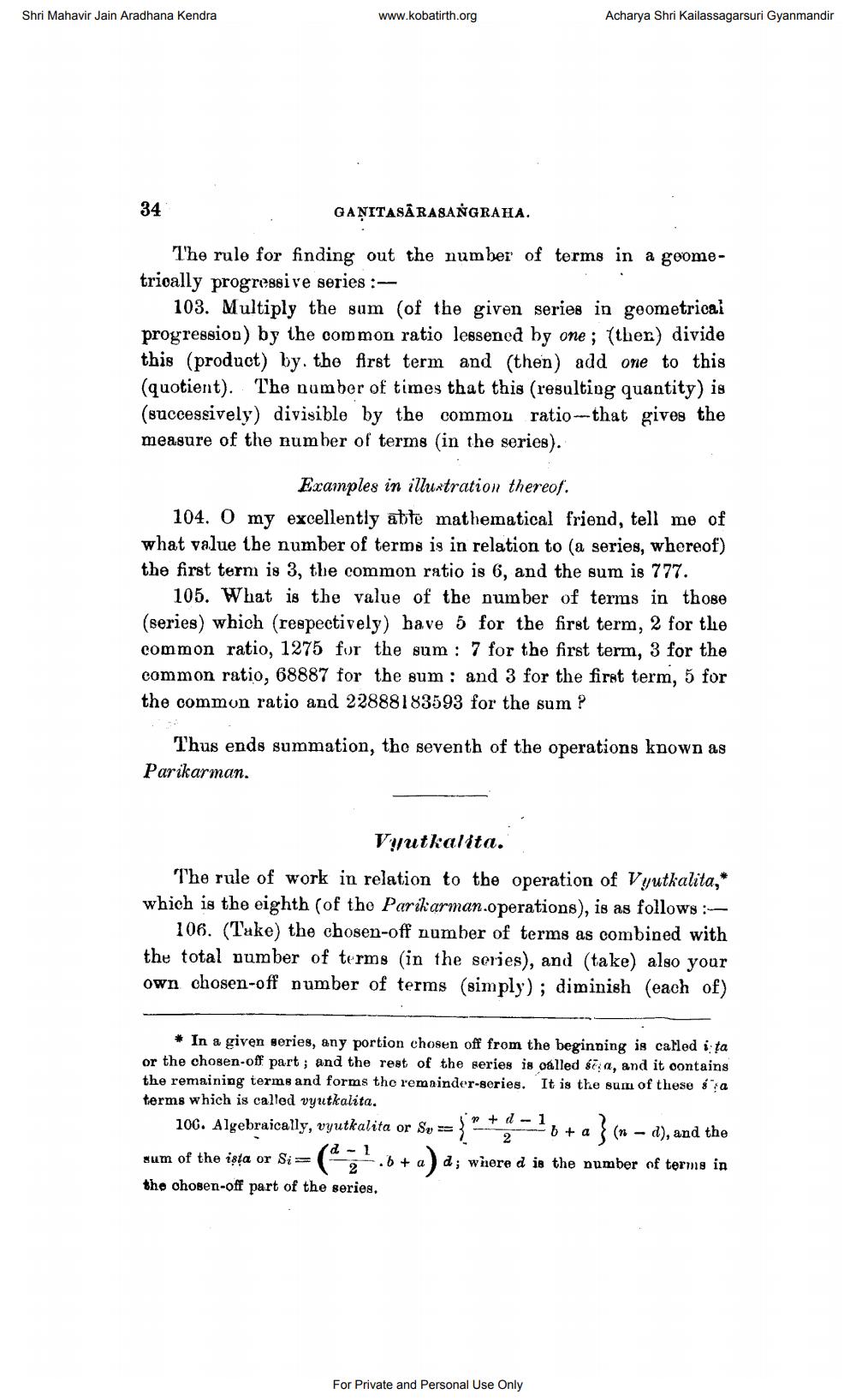________________
Shri Mahavir Jain Aradhana Kendra
www.kobatirth.org
Acharya Shri Kailassagarsuri Gyanmandir
34
GANITASĀRASANGRAHA.
The rule for finding out the number of terms in a goometrioally progressive series :
103. Multiply the sum of the given series in geometrical progression) by the common ratio lessened by one ; (ther) divide this (product) by. the first term and (then) add one to this (quotient). The number of times that this (resulting quantity) is (successively) divisible by the common ratio--that gives the measure of the number of terms (in the series).
Examples in illuxtration thereof. 104. O my excellently atte mathematical friend, tell me of what value the number of terms is in relation to (a series, whereof) the first term is 3, the common ratio is 6, and the sum is 777.
105. What is the value of the number of terms in those (series) which (respectively) have 5 for the first term, 2 for the common ratio, 1275 for the sum : 7 for the first term, 3 for the common ratio, 68887 for the sum : and 3 for the first term, 5 for the common ratio and 22888183593 for the sum ?
Thus ends summation, the seventh of the operations known as Parikarman.
Vyutkalita. The rule of work in relation to the operation of Vyutkalita, * which is the eighth (of the Parikarman.operations), is as follows:
106. (Take) the chosen-off number of terms as combined with the total number of terms (in the series), and (take) also your own chosen-off number of terms (simply); diminish (each of)
* In a given series, any portion chosen off from the beginning is called i ta or the chosen-off part, and the rest of the series is oalled sea, and it contains the remaining terms and forms the remainder-series. It is the sum of these sa terms which is called vyutkalita.
106. Algebraically, vyutkalita or Sv == { "*"-20 + a}(n – d), and the sum of the isła or Si= 1.6+ a) d; where d is the number of terms in the chosen-off part of the series.
For Private and Personal Use Only




